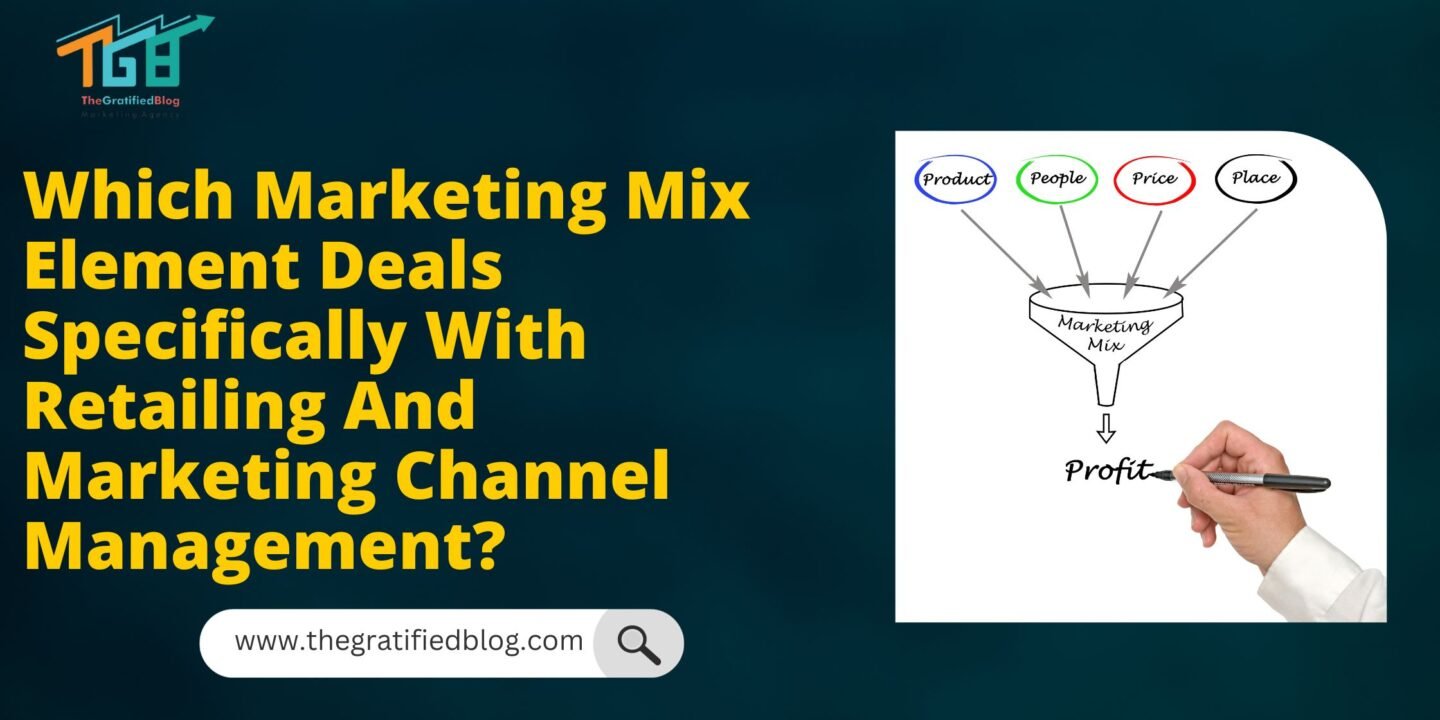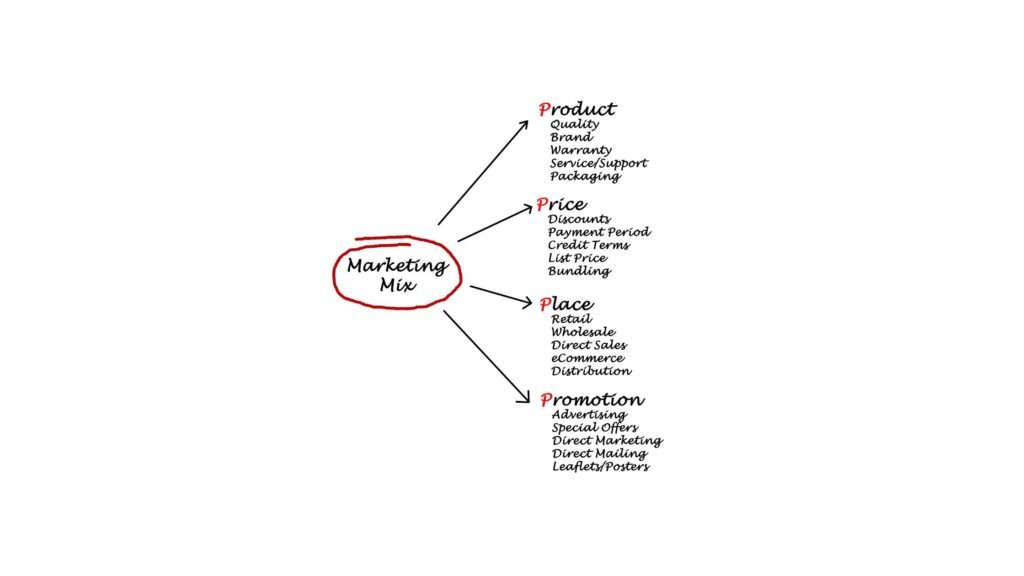
The marketing mix, often called the 4Ps, is a fundamental framework in marketing strategy that helps businesses formulate their product, price, promotion, and place approach. These four elements are crucial in shaping a company’s marketing strategy. This extensive blog post will explore the depths of the specific marketing mix element that deals with retailing and marketing channel management: Place.
Place, often known as distribution or placement, focuses on businesses’ methods and strategies to deliver their products or services to the target audience. In the realm of retailing and marketing channel management, place takes center stage. Let’s explore the answer to which marketing mix element deals specifically with retailing and marketing channel management. And how this critical element shapes the retail industry, the role of marketing channels, and how businesses can optimize their distribution strategies.
The Significance Of Place In Retailing
Retailing is selling products or services directly to consumers for their personal use. In this context, place refers to the physical and virtual locations where customers can access these products or services. It’s all about making the right product available in the right place at the right time. Here’s why place is a crucial factor in the retail industry:
- Accessibility: For retail businesses, accessibility is everything. Whether it’s a brick-and-mortar store, an e-commerce website, or a combination of both, being present where your target customers are is vital. Convenience is a primary driver of consumer choice.
- Customer Experience: The retail environment significantly influences the customer experience. A store’s layout, ambiance, and location can affect grasping how customers perceive and interact with the brand. Online retailers also need to create a seamless digital experience.
- Inventory Management: Efficient inventory management is a core aspect of retailing. Balancing supply and demand, optimizing stock levels, and reducing carrying costs all fall under the purview of Place in the Marketing Mix.
- Market Expansion: The choice of retail locations or e-commerce platforms can influence a business’s ability to expand into new markets. Selecting the proper channels can be a game-changer for growth.
Understanding Marketing Channels

To dig deeper into how place influences retailing and marketing channel management, it’s important to understand marketing channels. Marketing or distribution channels are the pathways through which products or services travel from the producer to the end consumer. These channels can vary in complexity and include multiple intermediaries, such as wholesalers, retailers, and agents. Selecting and managing marketing channels can profoundly impact a company’s success.
- Direct vs. Indirect Channels: Retailers can sell their products or services directly to consumers or through intermediaries. Direct channels involve selling directly to customers, while indirect channels rely on intermediaries, such as wholesalers or retailers, to reach the end consumer.
- Online vs. Offline Channels: E-commerce has introduced a new dimension to marketing channel management. Retailers must decide whether to focus on brick-and-mortar locations, online sales, or a hybrid approach. The decision frequently relies on the target demographic and the nature of the products or services.
- Channel Partnerships: Collaboration with channel partners, such as distributors or franchisees, is common in retailing. These partnerships can help expand a brand’s reach and create mutually beneficial relationships.
- Channel Integration: Some businesses integrate backward or forward in the supply chain. Backward integration involves taking control of activities previously performed by suppliers, while forward integration entails taking control of distribution or retailing.
So the question is:
Which Marketing Mix Element Deals Specifically With Retailing And Marketing Channel Management?
- a. place✅
- b. product
- c. Price
- d. promotion
- e. policy
So the correct answer is Place.
Optimizing Distribution Strategies
Effective distribution strategies are essential for retail success. To harness the power of place in the marketing mix, businesses must consider the following:
- Understanding Target Customers: A deep understanding of the target customer’s preferences, behaviors, and shopping habits is crucial. This knowledge informs decisions about the location and type of channels to use.
- Market Research: Conducting thorough market research helps identify opportunities and gaps in the retail landscape. It provides insights into where and how products or services should be made available.
- Channel Selection: Choosing the proper distribution channels is a critical decision. This entails weighing each choice’s advantages and disadvantages, considering cost-effectiveness, and aligning with the overall marketing and business strategy.
- Supply Chain Management: Efficient supply chain management ensures that products or services are delivered to the right place at the right time. This involves managing inventory, transportation, and distribution centers effectively.
- Customer Experience: Crafting a smooth and delightful customer experience is vital. Both in-store and online, businesses should focus on user-friendly interfaces, fast and reliable delivery, and exceptional customer service.
- Adaptation and Flexibility: The retail landscape is ever-changing. Businesses should remain adaptable and open to adjusting their distribution strategies as market conditions evolve.
What Are The Elements Of The Retail Marketing Mix?

The retail marketing mix, also known as the 6Ps, consists of elements that retailers use to effectively market their products or services and create a compelling shopping experience for their customers. The aspects of the retail marketing mix include:
- Product: This element encompasses the retailer’s range of products or services. Retailers must carefully select and curate their product offerings to meet customer needs and preferences. Product decisions also include quality, branding, packaging, and unique selling points that differentiate the offerings.
- Price: The pricing strategy is vital in the retail marketing mix. Retailers must set prices that are competitive in the market while ensuring profitability. Pricing decisions can include discounts, sales promotions, pricing strategies (e.g., value or premium pricing), and considerations for psychological pricing (e.g., pricing products at $9.99 instead of $10).
- Place (Distribution) refers to customers’ locations and channels to access the retailer’s products or services. Retailers must decide on their physical store locations, e-commerce websites, mobile apps, and other sales channels. This element also encompasses decisions related to store layout and design.
- Promotion: Promotion involves the marketing and advertising strategies to communicate with and attract customers. Retailers use various tactics, including advertising, sales promotions, Leveraging public relations, social media, and content marketing to establish awareness and drive sales. Effective promotion can help create brand loyalty and drive foot or online traffic.
- People: People in the retail marketing mix refer to the employees and customer service representatives who engage with customers. The quality of customer service and the conduct of employees play a pivotal role in influencing the customer’s shopping experience. Well-trained and motivated staff can enhance customer satisfaction.
- Physical Evidence: Physical evidence refers to the observable and non-observable elements of the retail setting that impact the shopping experience. This includes store design, layout, signage, and overall ambiance. Retailers aim to create a pleasant and memorable shopping atmosphere that aligns with their brand image and the expectations of their target audience.
FAQs
Q1. Why Is Place Crucial In Retail Marketing?
The place is crucial in retail marketing because it directly impacts the accessibility and availability of products or services to customers. It influences the customer’s convenience, experience, and the overall success of a retail business.
Q2. How Can A Retailer Choose The Right Distribution Channels For Their Business?
When selecting distribution channels, retailers should consider their target audience, product characteristics, market research, and cost-effectiveness. The choice of channels should align with the retailer’s overall marketing and business strategy.
Conclusion
In retailing and marketing channel management, the “place” element of the marketing mix is the linchpin that connects businesses with their customers. It’s about ensuring that products or services are accessible, available, and conveniently located for the target audience. Marketing channels, which determine how products flow from producer to consumer, are equally vital.
Understanding the significance of place and mastering marketing channel management is paramount for success in the retail industry. It involves a nuanced understanding of customer behavior and market dynamics and an unwavering commitment to providing an outstanding customer experience.








No Comments